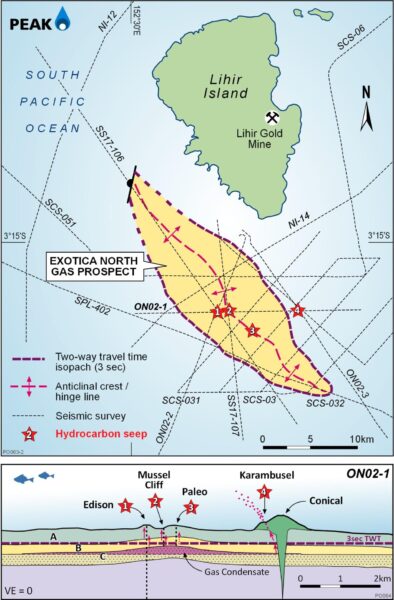Geological Structure and Hydrocarbon Seeps
The Exotica North Gas Prospect is defined by a mega anticline structure 32 km long and 9 km wide. Closely spaced 2D seismic data and analyses of samples recovered from the sea floor indicate that hydrocarbon seeps are linked to this structure and sourced from an over-pressured gas condensate reservoir.
In June-July 2023, four hydrocarbon seepage areas on the sea floor (Edison, Mussel Cliff, Paleo and Karambusel), were investigated using an ROV (Remotely Operated Vehicle) launched from RV Sonne (SO-299). A number of features were observed that are common to submarine hydrocarbon seeps associated with oil and gas fields in the Gulf of Mexico and the North Sea, as explained below.
Methane seeping from these New Ireland Basin sites is a nutrient source for highly specialised bacteria which form white, mat-like colonies on the sea floor. Other evidence for gas seepage includes the occurrence of gas pockmarks, authigenic carbonate pavements, sulfidic sediments, and chemosynthetic colonies of clam, mussel, gastropod, tubeworm and crab.
Gas samples and sediment extracts from these locations returned high concentrations of methane (C1), ethane (C2), propane (C3) and butane (C4), with C1/(C2+C3) ranging from 7 to 15. These values are typical of hydrocarbons produced from gas condensate reservoirs in Papua New Guinea, for example, Hides-Juha-Angore Fields = 7).
Additional surveys, possibly 3D, may be needed to delineate the full extent of the anticlinal structure.
Risked Prospective Resource Estimates for the area containing the highest density 2D seismic coverage are:
- 3.6 TCF of natural gas and 156 MM stb of light crude oil (P90)
- 7.8 TCF of natural gas and 390 MM stb of light crude oil (P50)

